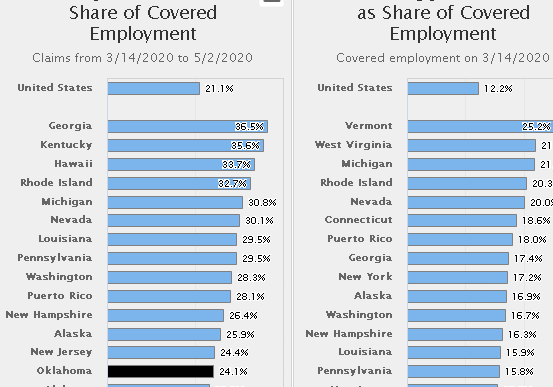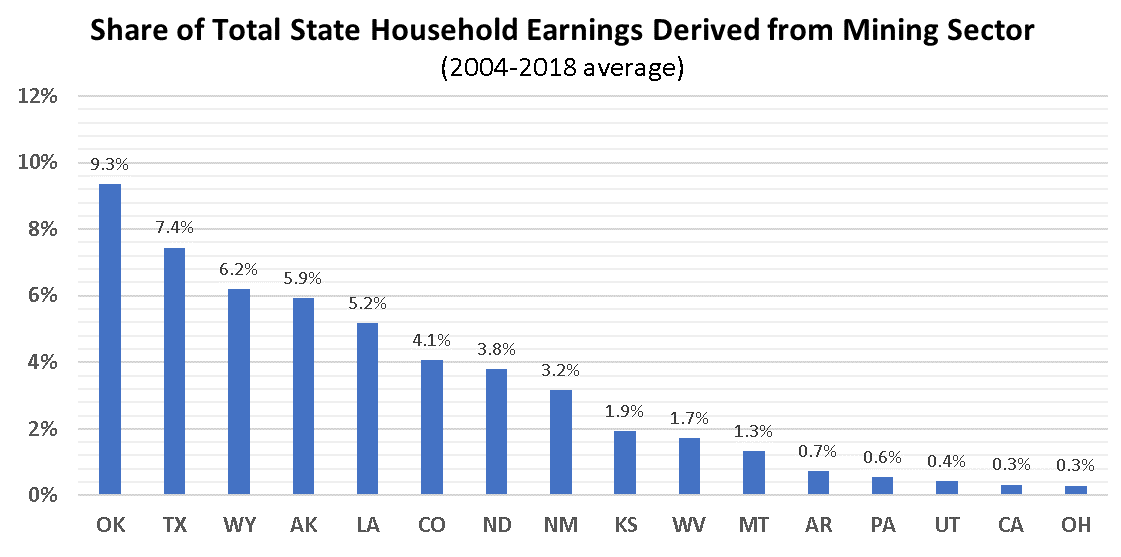The Bad News You may be wondering where the good news is hiding given the string of bad news on Oklahoma unemployment claims so far…
Economic Impact of CareerTech Career Majors (2013)
This report is part of an ongoing effort to assess the economic contribution of the CareerTech System to the Oklahoma economy. The specific objective of the study is to prepare a comprehensive cost-benefit assessment of the system’s career major programs. Career majors are commonly viewed as the flagship program of the CareerTech System because of the large number of students enrolled and the extensive training received by students. The demand for these training programs continues to be driven by the desire of both employers and workers to match job skills over the work life more efficiently than is possible through access to common and higher education alone.
CareerTech Career Major Lifetime Earnings Gains – Executive Summary
CareerTech Career Major Lifetime Earnings Gains – Full Report
The study examines the cohort of career major completers in fiscal year 2010-2011 (FY11). The study seeks to identify and estimate the range of private and public benefits and costs associated with delivering training to this cohort and then assess the expected net economic contribution to the Oklahoma economy. Policymakers generally support the subsidization of public education and training programs on the grounds that the resulting wage and productivity effects enhance economic activity over time.
Estimates are formed for benefits accruing to students, government, and the broader state economy. As with all forms of formal education, the primary economic benefit generated by career major training is work life income gains realized privately by students. A model of earnings gains is constructed to explain the composition of the expected future income gain for completers. Estimates are similarly formed for the direct costs to deliver the programs, tuition costs for students, forgone wages and economic activity as students undertake training, and spillover costs from taxation to fund these services through the public sector.
Estimates indicate that training the FY11 cohort of career major completers produced direct benefits totaling $1.93 billion in excess of direct costs. The largest direct benefit accrues to career major completers in the form of an estimated $1.8 billion in added future income earned within the state. When potential indirect spillover benefits and other indirect costs are considered, total net benefits to the Oklahoma economy are $3.5 billion in current dollars. The net benefit consists of $3.94 billion in direct and indirect benefits offset by $445 million in direct and indirect costs associated with delivering the programs.
The first two sections of the report provide an overview of the role of career and technology education in Oklahoma and a profile of the current structure of career majors. The next section provides a discussion of the economic payoff to occupation-based education and develops the methodology underlying the work life income gain estimates. Estimates of the economic spillover effects in the state economy resulting from the income gains of completers are provided next. Cost-benefit estimates are then formed and the paper concluded by discussing other potential benefits from career and technology training not captured by the cost-benefit analysis.



